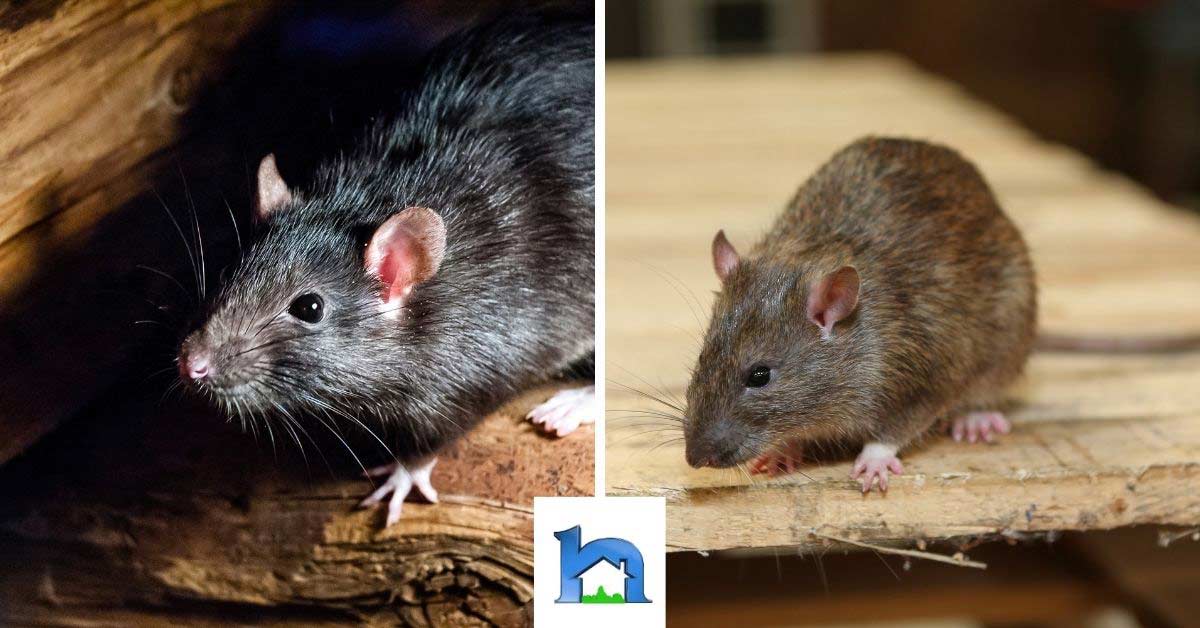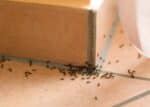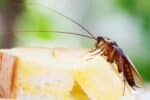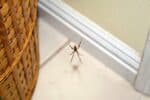
Roof Rats Vs. Norway Rats
There are two common types of rats here in South Florida. If your home becomes infested, you might be wondering how to tell the difference between roof rats vs. Norway rats? Roof rats go by many names: Florida palm tree rats, black rats, ship rats, or house rats. Norway rats, present on every continent except Antarctica, also have a range of names: brown rat, common rat, street rat, sewer rat, wharf rat, Hanover rat, Norwegian rat, and Parisian. Regardless of what you call them, these rats are a major concern for South Florida homeowners. Both can invade homes, gnaw on wires and wood, leave droppings and urine within the home, and potentially transmit disease to humans. From these unwanted intruders, people can get more than 35 diseases.
For many of us, the sight of a rat sends shivers down our spine. We know a rat problem can be stressful and upsetting, so we have gathered all the information you need to get rid of your unwanted houseguests for good.
Roof Rats vs. Norway Rats
The most common rats in South Florida are roof rats and Norway rats. When you see a rat in your home or on your property, it is disturbing, and the last thing you may want to do is look at it more closely. Noticing the rodent’s appearance, behavior, and other characteristics can help you identify it, which is the first step to addressing an infestation. Let’s examine the characteristics of both these home invaders.
How to Identify Roof Rats
Appearance
The roof rat ranges in color. You will find three color patterns among them in Florida: gray back with lighter gray underside, black back with dark gray belly, and brownish gray with a lighter white bottom side. Adult roof rats are 12 to 14 inches in length, including their tail, which is longer than the rest of their body. They weigh between five and 10 ounces. Their black tails are hairless and scaly. Their small, sleek body allows them to be physically agile and to more easily enter your home through small openings.
Habitat
You will find roof rats throughout South Florida, including West Palm Beach, Bonita Springs, Fort Myers, Naples, Fort Lauderdale, Pompano Beach, Miami, Miami Gardens, Port Saint Lucie, Fort Pierce, and in between. They also live in the states along the Southern Atlantic, Gulf of Mexico, and Pacific coast.
These arboreal or tree-living rats can climb and access more spaces than Norway rats. Like squirrels, they climb trees, vines, and wires to access food and water. They also travel across utility lines and branches to access the roofs of structures, such as homes, restaurants, and grocery stores.
Behavior
Once indoors, roof rats can cause several problems. You may hear them rustling around in the walls, causing you to lose sleep. They can cause structural damage to your home by gnawing and defecating. Roof rats can chew through wires and potentially start fires. They can gnaw through plastic water pipes, chew holes in the wall, or engage in other activities that cause structural damage or leaks within your home.
Roof rats make their presence known during citrus season, especially, which runs from September through March in Florida. If you have citrus plants in your neighborhood, a telltale sign of roof rats is hollowed-out citrus fruit that they use for food.
Another sign of roof rats is their black, banana-shaped feces that is about a quarter- to half-inch in length. You can find this within your home where they are nesting, and especially in the attic.
Diet
Roof rats are omnivores. These indiscriminate eaters consume various foods, including food trash found in garbage cans or dumpsters, fruits, nuts, small birds or reptiles, and insects. They are a menace to farmers because they feed on crops. They love foraging for cereal, sugar cane, coconuts, cocoa, oranges, and coffee beans. Typically, they destroy or contaminate more food than they eat.
Nesting
Roof rats like to nest above the ground. You may find them nesting in wall voids, attics, soffits, piles of debris, skirts of old palm fronds, hollow trees, outdoor kitchens, cars and RVs, and more.
Reproduction
These rodents reach sexual maturity around three to four months of age. In Florida, breeding occurs year-round, though it peaks in the spring and fall. The gestation period is between 21 to 23 days. Litters contain between five to eight pups, and a female rat can have up to five litters in a year. Because of this, infestations can grow severely in a short amount of time if not addressed by the homeowner.
How to Identify Norway Rats
Appearance
These reddish-brown rats are often plump and have a blunt muzzle. The length of the tail is roughly equal to the rest of the rat’s body, though it may be shorter. These large rats can weigh up to a pound.
Behavior
Norway rats are the most common rat through much of Europe and North America, though the roof rat dominates in South Florida. These pests can pose many problems. They can gnaw objects around your home and eat your food. Additionally, the rats can transmit disease via their waste. They also may have mites or fleas on their fur that may also spread disease.
These rodents like to burrow. They dig in the garbage and burrow under buildings or concrete slabs to make nests. When identifying a burrow, look for freshly dug dirt in front of three-inch openings. Burrows are usually 18 inches deep and often have a hardpacked soil leading to them that acts as a “runway.” In addition to providing a safe shelter, burrows also function as a site for storing food. Their burrowing behavior can undermine the foundations of structures, erode banks of levees, damage landscaping, and cause blockages in sewer lines.
Diet
These pests prefer to eat fresh food, and they like grain, fish, and meat. However, Norway rats will eat decaying food or garbage to survive. They need about an ounce of food and an ounce of water every day.
Habitat
Norway rats like to stay near the coast or canals. They are also attracted to areas where garbage is not stored correctly. They stay close to their nest when foraging for food and water, traveling only 100 to 150 feet for sustenance, but may travel more widely if food is unavailable nearby. This rat is known for also living in the sewers.
Nesting
These rodents like to nest in burrows, and they prefer to stay close to their harborage when searching for food. When Norway rats nest indoors, you can find them in basements, behind walls, or in crawl spaces. Around your property, you can find them nesting under garbage, around gardens or fields, and along building foundations.
Reproduction
Norway rats reach sexual maturity between three to five months of age. They breed more rapidly than roof rats, producing up to seven litters per year. Each litter contains between eight and 12 pups. For this reason, a Norway rat infestation should be addressed immediately.
What Is the Difference Between Norway Rats and Roof Rats?
You can distinguish between these two common South Florida rats by their physical and behavioral characteristics. If the rat exhibits climbing behaviors, it is likely a roof rat. Because of this climbing behavior, when roof rats infest your home, they tend to nest in attics and upper floors. Norway rats tend to not climb as well, and can be found nesting in burrows, basements, or in walls on the first floors of buildings.
These common rodents are different in appearance. Norway rats look heavier than roof rats, and roof rats have a tail that is longer than its body.
Why Do I Have Root Rats or Norway Rats?
Rats enter your home in search of what every animal wants: food, water, and shelter. These warm-blooded creatures look for warm places to nest, and your home provides an ideal environment. In South Florida, rats can infest all year long, but a cold spell is more likely to drive them indoors. There are a few things that can make your home even more appealing to rats.
Food smears and spills on your kitchen surfaces or in cabinets or pantries attract rats. Food stored in its original packaging is easily accessible to rats who gnaw through it. Any leaky appliances or areas in your home where moisture collects can potentially bring in rats.
Aside from food and water sources, certain features of your property can make it more accessible to rats. Clutter both inside and outside your home provides a hiding spot for rats. Any debris or construction materials around your property are attractive for rats looking to nest. Since roof rats are great climbers, tree limbs or branches that come close to your home can act as a bridge. Any apertures in your home’s exterior can function as an entry point for these four-legged animals. Rats can enter your home through an opening as small as a half-inch wide.
Hazards of Roof Rats and Norway Rats
Several diseases can be potentially transmitted from these unsanitary rodents, making a rat infestation an urgent problem that needs to be addressed. Implement a rodent control plan immediately to limit your exposure to these hazardous home invaders.
How Do I Get Rid of Roof Rats and Norway Rats in Florida?
Rats are a serious pest problem, and homeowners may not want to deal with it on their own. Pest control companies use several methods to address a rat problem and develop a strategy specific to the infestation in your home. This is why consulting with a professional pest control company is the best strategy to remove these rodents.
Call Hulett for Rodent Control Services
When rats infest your South Florida home, it is a severe problem. At Hulett, we take rats seriously and are determined to help you eliminate them quickly. That’s why we keep our experienced and friendly technicians current with the latest techniques, methods, and tools for rodent control. We know that a rat problem can strike at any time, so we offer appointments within 24 hours. Check out our rodent control services in South Florida today.



